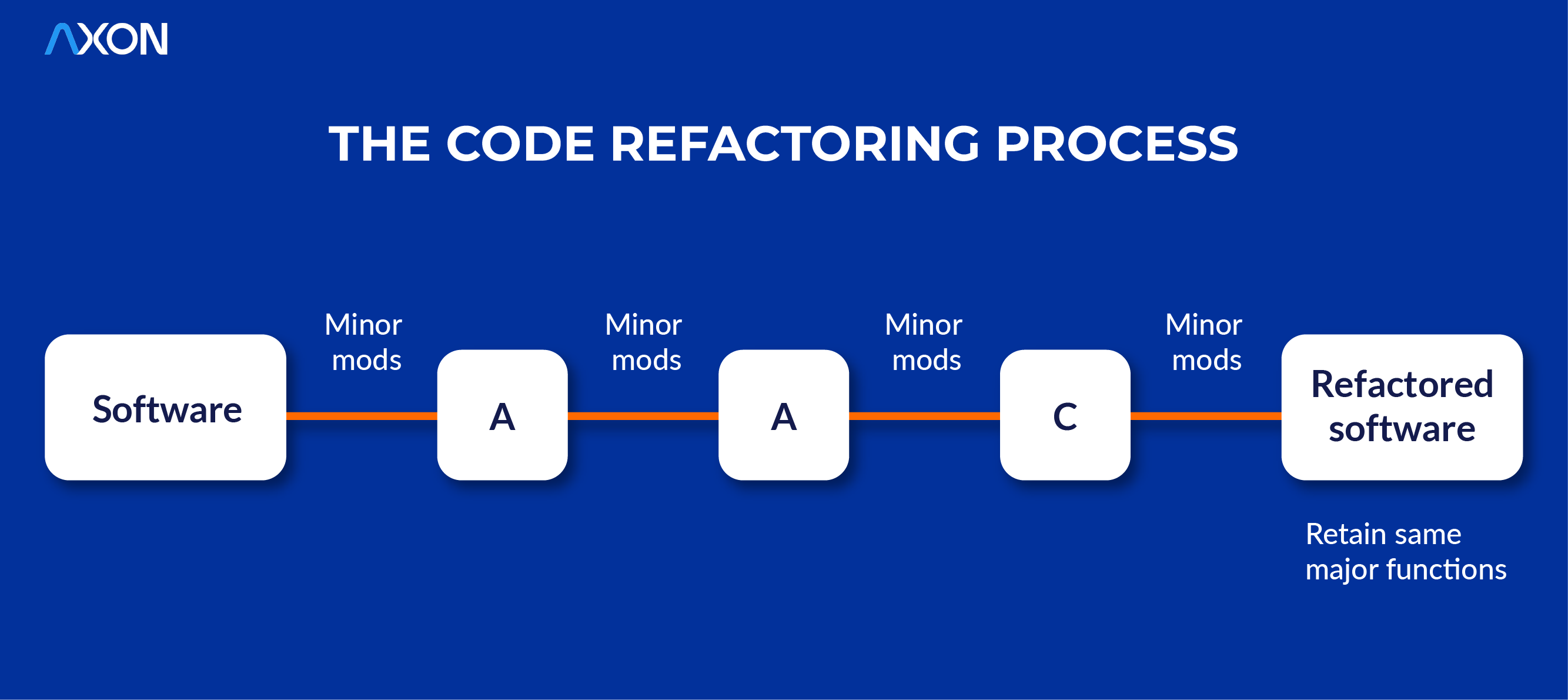Refactor
What is Refactor?

Definition:
Refactoring is a software development practice that involves restructuring existing code without changing its external behavior to improve readability, maintainability, and performance. It focuses on enhancing the internal structure of code to make it more understandable, flexible, and efficient while preserving its functionality.
Analogy:
Think of Refactoring as renovating a house without altering its overall design or layout. Just as renovations optimize living spaces for better usability and comfort, Refactoring optimizes code for improved functionality and ease of maintenance without changing its external behavior.
Further Description:
Refactoring encompasses various techniques and strategies to enhance code quality and efficiency, including:
Code Simplification: Streamlining complex code by removing redundant logic, eliminating code smells, and improving overall readability.
Modularization: Breaking down large, monolithic components into smaller, more manageable modules to improve code organization and maintainability.
Performance Optimization: Identifying and eliminating performance bottlenecks through algorithmic improvements, data structure optimizations, and code restructuring.
Error Handling: Enhancing error handling mechanisms to improve code robustness and reliability, making it more resilient to unexpected failures.
Code Duplication Removal: Identifying and consolidating duplicate code segments to promote code reuse and reduce maintenance overhead.
Why is Refactoring Important?
Code Quality: Refactoring improves code quality by eliminating technical debt, reducing complexity, and enhancing readability, making it easier to understand and maintain.
Agility: By keeping codebase clean and well-structured, Refactoring enables developers to respond quickly to changing requirements, implement new features, and fix bugs more efficiently.
Collaboration: Refactored code is easier to understand and modify, fostering collaboration among team members and promoting knowledge sharing within development teams.
Risk Reduction: Refactoring reduces the risk of introducing bugs and errors during code modifications, ensuring that software remains stable and reliable over time.
Examples and Usage:
Refactoring is applied across various software development scenarios, including:
Legacy Codebases: Refactoring helps modernize and improve the maintainability of legacy systems by restructuring outdated or poorly written code.
Code Reviews: Developers incorporate Refactoring as part of code review processes to identify opportunities for improving code quality and readability.
Continuous Integration/Continuous Deployment (CI/CD): Refactoring is integrated into CI/CD pipelines to ensure that code changes are continuously optimized and validated before deployment.
Key Takeaways:
- Refactoring is the practice of restructuring existing code to improve readability, maintainability, and performance without altering its external behavior.
- Techniques include code simplification, modularization, performance optimization, error handling improvements, and code duplication removal.
- Benefits of Refactoring include enhanced code quality, agility, collaboration, and risk reduction.
- Refactoring is applied in various software development contexts, including legacy codebases, code reviews, and CI/CD pipelines, to continuously improve codebase health and functionality.
Table of Contents




